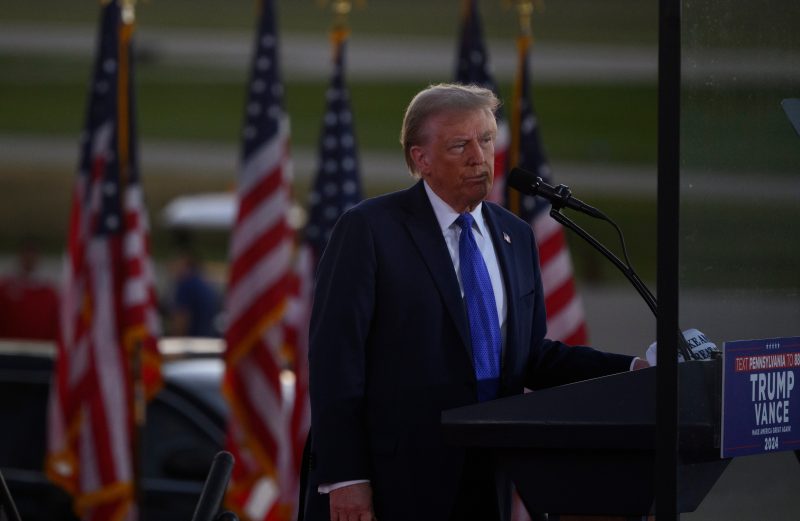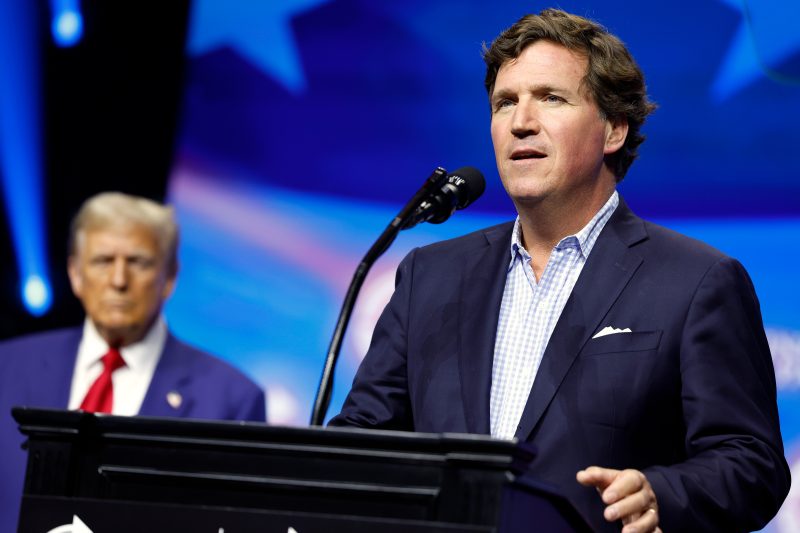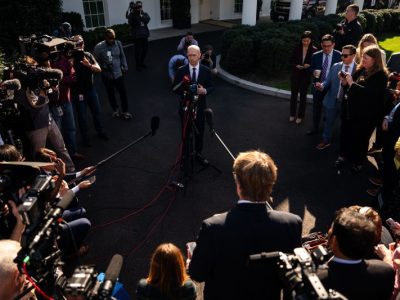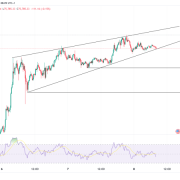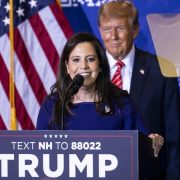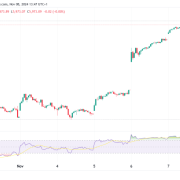
Welcome to The Campaign Moment, your guide to the biggest developments in a 2024 election in which it’s time to put pen to paper … ballots.
(Make sure you are subscribed to this newsletter here. And also listen to the Campaign Moment podcast on Apple Podcasts, Spotify or wherever you get your podcasts. This week, we looked at what may be the two biggest swing states right now.)
The big moment
Let the voting begin! The first 2024 presidential ballots are set to go out Friday in North Carolina. And in exactly two months’ time — Nov. 5 — voters will be taking to the polls to decide our next president, control of two very tight chambers of Congress, and many other races and issues.
In other words, it’s getting real. Combine that with Tuesday’s debate, and the 2024 election is truly kicking into full gear.
So I thought it time for a good, considered think on where we stand. Here’s where I’ve landed.
The presidential race is more or less a toss-up, with a slight edge to Harris
There is no question that Vice President Kamala Harris has gained significant ground for the Democratic ticket since entering the race. She’s taken a slight lead over Donald Trump in most national polls, and The Washington Post’s polling averages show she’s gained between 3.7 points and 4.7 points on the margin in each of the seven key swing states.
But it seems the race has settled into a more static phase, with no significant Harris bounce out of the Democratic National Convention two weeks ago. And currently both Harris and Trump lead in three swing states, while Nevada is more or less a tie.
So why might I give a slight edge to Harris? Because she holds the only advantages outside a point — in both Pennsylvania (3 points) and Wisconsin (4 points). If she wins those and all the non-swing states break as expected, she’s at 254 electoral votes. Given the winner needs 270 electoral votes, she could close the deal with a win in North Carolina or Georgia (each of which have 16 electoral votes) or a win in Michigan (15 electoral votes) and Nebraska’s 2nd Congressional District. (That state awards electoral votes to the winner of each district, and the Omaha-based district is very competitive.)
Trump, meanwhile, doesn’t have as obvious a defined path with these numbers — he leads in only one swing state by a full point. His ad reservations suggest he might be betting hard on Pennsylvania and Georgia, which could combine with traditionally red North Carolina to give him 270. But Pennsylvania is looking tougher, and if he doesn’t win that, the math becomes much more difficult.
The debate is a major inflection point
The contrarian political analysts out there who like to talk about how debates don’t really matter were served a reality check on June 27, as President Joe Biden’s performance ultimately led to his withdrawal and completely recast the 2024 race.
The stakes in Tuesday’s debate may not be as big. But in a race that is really still settling and with voters still learning about Harris, it looms larger than most.
Harris gave her first major interview last week, and it went fine. But her perceived history of somewhat unsteady public performances and the fact that the interview took so long to take shape make how she’ll do an open question. Certainly, the fact that her campaign wasn’t leaping to put her in front of reporters to take questions might suggest they see risk in a more freewheeling session.
With Trump, we more or less know what we’re going to get. With Harris, it’s about how she handles the contrast and jousting with Trump, and whether she can live up to the increasingly positive image Americans have of her.
The crucial motivation factor
As any good political skeptic will tell you, the polls have been off before. In both 2016 and 2020, they undersold Trump’s ultimate vote shares; in 2012, Barack Obama slightly over-performed them. (Our polling averages tool shows you how the current race would change with the same-sized polling misses.)
Some of this is polls being slightly wrong. But some of it is that people who decide late can break strongly one way or another, and it’s difficult to gauge precisely who will turn out.
For now, Democrats see the more encouraging signs on this front. Their enthusiasm has suddenly surpassed Republicans’ and reached 2008 (read: Obama) levels. What’s more, fear is a powerful motivator, and Trump seems to loom larger as a boogeyman than Harris; CNN swing-state polling this week showed nearly half of voters see Trump as a “threat to the country,” compared with less than 4 in 10 for Harris.
These things can change. But if you combine these measures with Democrats’ apparent financial advantage — more on this later — they benefit from some real intangibles when it comes to getting their voters to the soon-to-open polls.
The Senate favors the GOP, the House is a toss-up — and who knows what’ll happen
Even if Harris does win, there’s a good chance she will be inaugurated after Senate control is handed over to Republicans. And if she loses, the Senate is in all likelihood gone. Such is the state of the difficult 2024 map for Democrats.
As things stand, they probably need to hold seats in both Ohio (which Trump won by eight points in 2020) and Montana (which Trump won by 16). And then they would need to run the table in the swing states.
The good news for them is they lead in just about every poll in all those states except Montana. That makes that state the most likely tipping point. As for how it’ll tip? Republican Tim Sheehy has led Sen. Jon Tester (D-Mont.) by single digits in almost all of the polls, but Sheehy has also been the subject of a series of potentially damaging revelations about his personal life and past comments.
The Republican-controlled House is also very much up for grabs, and we have precious little polling on key races. But Democrats need to pick up only around four seats, which is doable in a close race. And the best measure we have now — the “generic ballot” — shows Democrats with one of their biggest advantages of the last two years: 2.4 points.
Harris’s money edge appears to grow
The big news Thursday on the presidential campaign trail was that Harris has greatly extended her fundraising advantage over Trump.
While Trump announced his campaign and affiliated entities raised $130 million in August, Harris’s campaign raised more than $300 million, per NBC News.
Harris more than doubling up Trump continues a trend from July, when she raised massive amounts shortly after entering the race.
Driving home Harris’s financial advantage: Her campaign has reserved significantly more ad time for the final two months of the campaign across the swing states, while Trump’s reservations as of this week focused extensively on two states: Georgia and Pennsylvania.
How Trump critics’ endorsements are breaking down
Former congresswoman and House Jan. 6 committee co-chairwoman Liz Cheney (R-Wyo.) on Wednesday took a much-anticipated step in saying she’ll vote for Harris over Trump.
Cheney has long criticized Trump in stark terms, but there was some question as to whether she’d back his opponent. After all, Cheney back in 2020 labeled Harris a “radical liberal.”
The endorsement comes amid real discord on the “Never Trump” right about whether supporting and advocating for Harris is the answer or a bridge too far. And given that discussion, I thought it worth recapping where some key Republican Trump critics have come down thus far.
Backing Harris: Cheney, former congressman and Jan. 6 committee member Adam Kinzinger (Ill.), former Georgia lieutenant governor Geoff Duncan, former congresswoman Barbara Comstock (Va.).
Not backing Trump (but hasn’t endorsed Harris): former vice president Mike Pence, former defense secretary Mark T. Esper, former defense secretary Jim Mattis, former Trump White House chief of staff John Kelly, former national security adviser John Bolton, former national security adviser H.R. McMaster, Sen. Mitt Romney (Utah), Sen. Lisa Murkowski (Alaska), Sen. Susan Collins (Maine), Sen. Bill Cassidy (La.), Sen. Todd Young (Ind.), former senator Patrick J. Toomey (Pa.), former New Jersey governor Chris Christie.
Backing Trump: Georgia Gov. Brian Kemp, New Hampshire Gov. Chris Sununu, former senator Richard Burr (N.C.), former Arizona governor Doug Ducey.
A momentous number
1 in 5
That’s the percentage of Trump voters who said they planned to vote by mail or drop off an absentee ballot in the 2024 election, according to an Economist/YouGov poll this week.
Why is that significant? Because it’s less than half the percentage of Harris voters who planned to do the same.
Republicans have been trying to get their voters to bank more votes before Election Day, but they’ve been undercut by Trump’s frequent comments about the purported dangers and unreliability of mail voting.
These numbers suggest pre-Election Day voting — whether by mail or in-person early voting — could look a lot like it did in 2020. The YouGov data showed the percentage of Trump voters planning to vote on Election Day outpacing Harris voters by 20 points. The gap in 2020: 20 points.
Take a moment to read:
“The fear factor is now hurting Trump” (Washington Post)
“The 2 key states that could decide the 2024 election” (Washington Post)
“Trump and Harris’s first presidential debate is Tuesday. Here’s what to know.” (Washington Post)
“Republicans Seize on False Theories About Immigrant Voting” (New York Times)
“Antiabortion groups blast Trump’s recent appointments: ‘Totally concerning’” (Politico)
“If Republicans Want to Win, They Need Trump to Lose — Big” (Politico)

